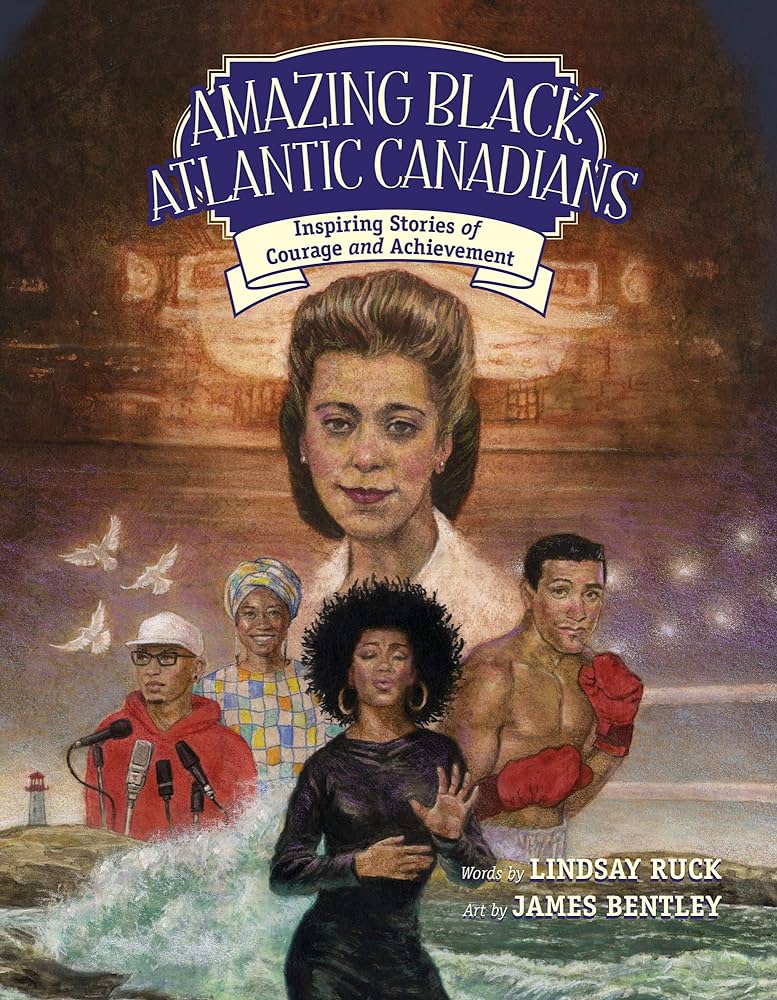Honouring Black Atlantic Canadian History: The Diversity and Inclusion Book Club Discussion with author Lindsay Ruck
February 1, 2024
Honouring Black Atlantic Canadian History: The Diversity and Inclusion Office Book Club discussion with author Lindsay Ruck
Materiel Group’s Diversity and Inclusion Office hosted a book club on Thursday, February 1st, 2024, in celebration of the 29th year of Black History Month and the 10th year of the International Decade for the People of African Descent. In line with this year’s Black History Month theme of Black Excellence: A Heritage to Celebrate; a Future to Build, the meeting commemorated both historic and ongoing contributions of Black Canadians, discussing Lindsay Ruck’s book Amazing Black Atlantic Canadians. Led by Chief of Staff Major-General Rob Dundon and Section Head Samantha Moonsammy, the book club featured author Lindsay Ruck in a moving discussion about the power of storytelling, celebrating Black excellence and resistance, and honouring the multifaceted and dynamic experiences of Black people in Canadian history.
Lindsay explained that the book functions to fill a void in discussions of inclusivity and diversity. Beginning by historicising the experience of Black Canadians, the book offers insight into history that is not commonly discussed in classrooms and the workplace.
The book describes the various ways that people of African descent came to make up the fabric of Canadian society, with sections on athletes, artists, movers and shakers, and military figures. Throughout the book, we get snapshots of information, including a synopsis of the once-thriving community in Halifax, Africville. We learn that Africville was destroyed and never rebuilt as a result of racial injustice, showing one of the many ways that Black Canadians were deprived in Canada.
One of the book’s main important features is its highlight of specific Black Canadians. One such spotlight tells us about the once-enslaved Richard Preston, who was separated from his mother during childhood and reunited several years later in Canada. Richard’s story, which highlights a young person’s quest to find his mother, is an example of how love triumphs over adversity and can be easily understood by everyone. Another example is of Sam Langford, a boxer who faced several racial barriers during his career. Sam lost his vision in his left eye during a fight in 1917 yet continued to box for the next eight years, showing great determination and fortitude in the face of so much adversity.
These rich and transformative stories connect us with the past by humanising these figures, some of whom exist merely as names in ledgers like the “Book of Negroes.” Lindsay’s book humanises these individuals by giving their names and stories the honourable recognition they deserve. Through Lindsay’s book, we’re able to draw connections between our lives and theirs while recognising the great adversity they faced in order to survive and, more importantly, honouring how they have paved the way for us in our places of work and our society.
During the meeting, members asked for insights into how to incorporate discussions around race and inclusion into the workplace. In Lindsay’s words, “education” is a fundamental tool for breaking barriers. Adding to Lindsay’s insights, Section Head Samantha Moonsammy noted that “knowledge transfer, access to sponsorship, and belongingness” are all tactics to break down structural barriers and cultivate inclusion within the workplace.
Paraphrasing Major-General Rob Dundon, to curb racism, we must be willing to get out of our comfort zone and have difficult conversations that take us out of the box. This powerful engagement filled a void in the national narrative, encouraging members to become co-conspirators in the pursuit of a more just and inclusive world.

